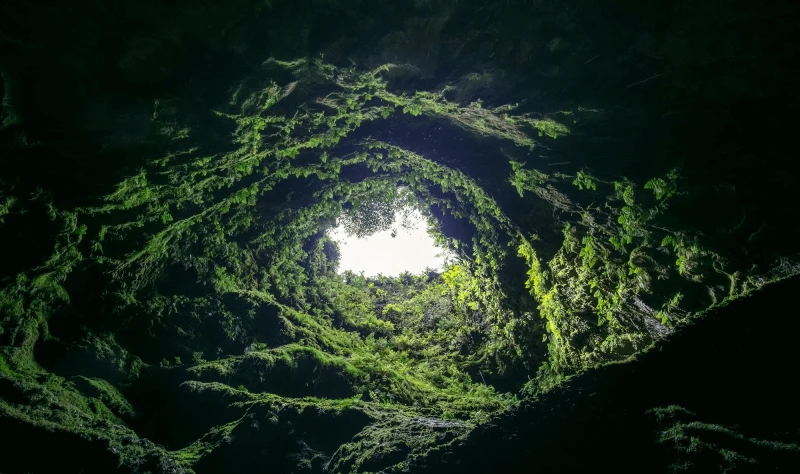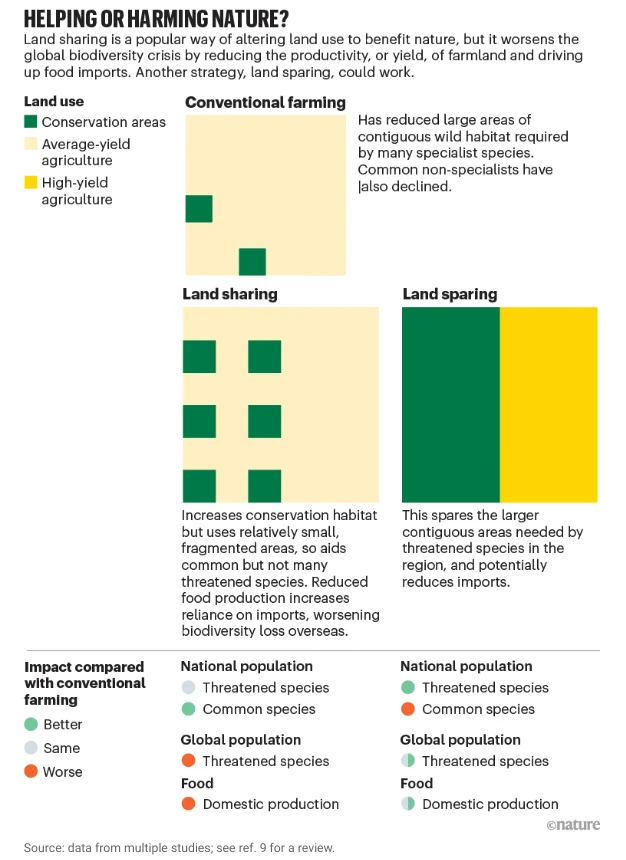What’s trendy isn’t always best: Why land-sharing and rewilding risk driving up food imports and accelerating biodiversity loss
What’s trendy isn’t always best: Why land-sharing and rewilding risk driving up food imports and accelerating biodiversity loss


Numerous studies show that some of today’s most popular conservation policies are doing little to help those species most affected by farming. What’s more, by reducing how much food is produced per unit area (yield), they are driving up food imports and thereby having an impact on wildlife overseas.
Land sharing increases the populations of relatively common animals and plants, such as skylarks, field poppies and the more widespread butterflies. And highly targeted interventions can help some vulnerable species. But in the main, land sharing does little for those most specialized or threatened species that need large stretches of contiguous non-farmed habitat, such as the many birds, invertebrates, plants and fungi dependent on old-growth forest.
…
Some conservation groups and landowners have increasingly advocated for rewilding, in which large, contiguous areas of land are taken out of farming. Rewilding can benefit species that are locally vulnerable or endangered… However, assessments of the benefits rarely consider offshore damage. As with land sharing, unless people change their diets or eat less, or yields are increased in areas that are still farmed, the removal of land from productive agriculture will increase the demand for food imports, and so damage biodiversity elsewhere.

This is an excerpt. Read the original post here

 | Videos | More... |

Video: Nuclear energy will destroy us? Global warming is an existential threat? Chemicals are massacring bees? Donate to the Green Industrial Complex!
 | Bees & Pollinators | More... |

GLP podcast: Science journalism is a mess. Here’s how to fix it

Mosquito massacre: Can we safely tackle malaria with a CRISPR gene drive?

Are we facing an ‘Insect Apocalypse’ caused by ‘intensive, industrial’ farming and agricultural chemicals? The media say yes; Science says ‘no’
 | Infographics | More... |

Infographic: Global regulatory and health research agencies on whether glyphosate causes cancer
 | GMO FAQs | More... |

Why is there controversy over GMO foods but not GMO drugs?

How are GMOs labeled around the world?

How does genetic engineering differ from conventional breeding?
 | GLP Profiles | More... |

Alex Jones: Right-wing conspiracy theorist stokes fear of GMOs, pesticides to sell ‘health supplements’




 Viewpoint — Fact checking MAHA mythmakers: How wellness influencers and RFK, Jr. undermine American science and health
Viewpoint — Fact checking MAHA mythmakers: How wellness influencers and RFK, Jr. undermine American science and health Viewpoint: Video — Big Solar is gobbling up productive agricultural land and hurting farmers yet providing little energy or sustainabilty gains
Viewpoint: Video — Big Solar is gobbling up productive agricultural land and hurting farmers yet providing little energy or sustainabilty gains Fighting deforestation with CO2: Biotechnology breakthrough creates sustainable palm oil alternative for cosmetics
Fighting deforestation with CO2: Biotechnology breakthrough creates sustainable palm oil alternative for cosmetics Trust issues: What happens when therapists use ChatGPT?
Trust issues: What happens when therapists use ChatGPT? California, Washington, Oregon forge immunization alliance to safeguard vaccine access against federal undermining
California, Washington, Oregon forge immunization alliance to safeguard vaccine access against federal undermining 30-year-old tomato line shows genetic resistance to devastating virus
30-year-old tomato line shows genetic resistance to devastating virus The free-range chicken dilemma: Better for birds, but with substantial costs
The free-range chicken dilemma: Better for birds, but with substantial costs ‘You have to treat the brain first’: Rethinking chronic pain with Sanjay Gupta
‘You have to treat the brain first’: Rethinking chronic pain with Sanjay Gupta
